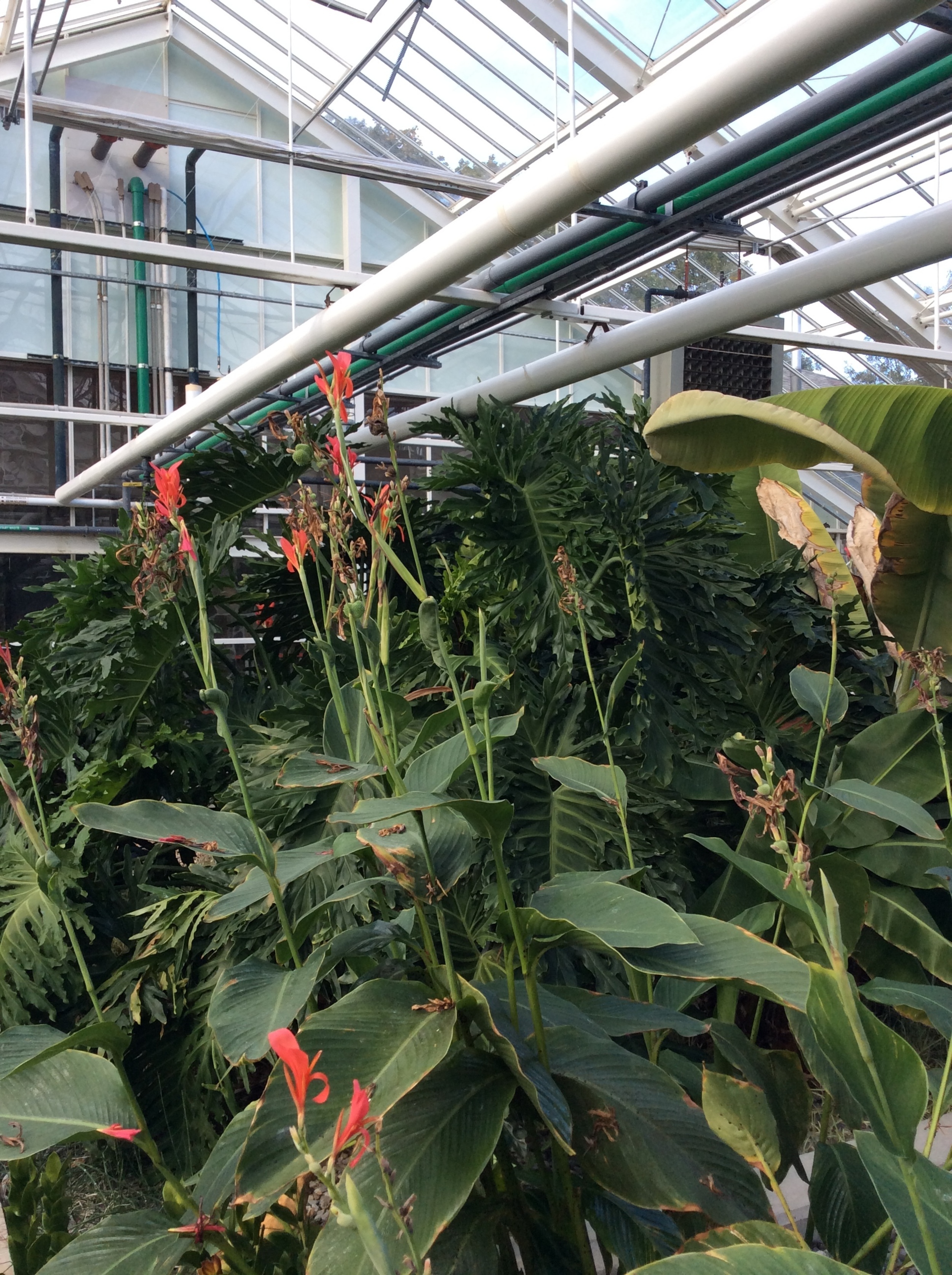Environmental stewardship is so important to New England Biolabs (NEB) that they identify it as one of their founding principles. Perhaps best known for their longstanding practiceof re-collecting and reusing the expanded polystyrene coolers used to ship cold products (the first biotech to do so, in fact), NEB’s commitment to the environment extends much further. The laboratory is a 140,000 sf facility that achieved LEED certification by optimizing energy usage through smart heating and lighting, responsible construction practices, 50% decrease in water consumption, and the conservation of on-site trees and wetlands. And while most companies would be satisfied with that, NEB took it further by constructing a greenhouse-based wastewater treatment facility.
Entrance to the Greenhouse
The wastewater greenhouse is an amazing site to behold: it’s a gigantic glass and steel structure that houses a mix of vegetation, like banana trees (fruiting in New England!), watercress, and water hyacinth, alongside multiple six foot tall translucent algae tanks, a gravel grow bed, and some ultraviolet disinfection. It is a beautiful marriage of science and nature – natural breakdown processes have been captured and strung together in a meaningful way to create clean water for the environment. This facility, which cost NEB $1M to build, can handle up to 27,500 gallons of black water per day. In other words, all of the sewage and light industrial waste from their entire scientific endeavor becomes chemical- and pollution-free water that feeds abutting wetlands and butterfly gardens.
To walk through is like taking an olfactory tour: as you enter you must pass over the black water storage tanks. Here the incoming waste is blended and bioaugmented with oxygen to support downstream aerobic digestion; a pungent, sharp smell that reminds you of exactly what the system is handling. The blended waste stream is then pumped into the algae tanks, where vines and water plants work together to convert waste components into carbon dioxide and nitrates; there is an unmistakable sense of a swamp. Next a sand filter is used to clarify the water of any remaining solids, at which point the clear water is pumped directly into the grow bed. The grow bed supports a healthy rhizome complete with heterotrophic bacteria, further converting chemicals like nitrate into nitrite, which feed the banana trees, willow, and other large plants – there is a very pleasant clean humus smell here, much like being at the edge of a creek in a forest. Finally the water is collected and fully disinfected with ultraviolet light before it is pumped back in the environment as groundwater, feeding the watershed for the Ipswich River.
The entire process is chemical free, environmentally responsible, and overall beautiful. Alongside the LEED certified science facility, it’s very easy to see why this solution has been called a “shining example of corporate responsibility”. For some companies this might seem like a cost-benefit trade-off, but when you set stewardship as a cornerstone to your ethics, the health of the environment becomes a meaningful part of the business plan.





